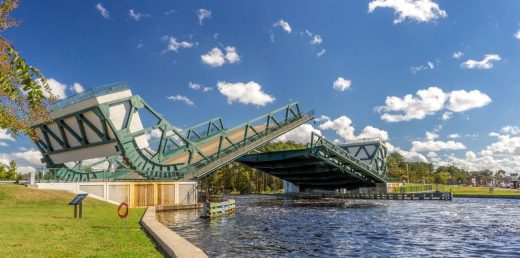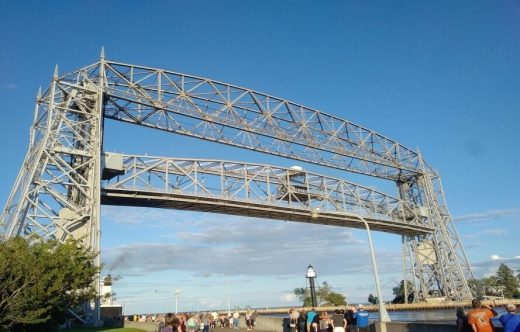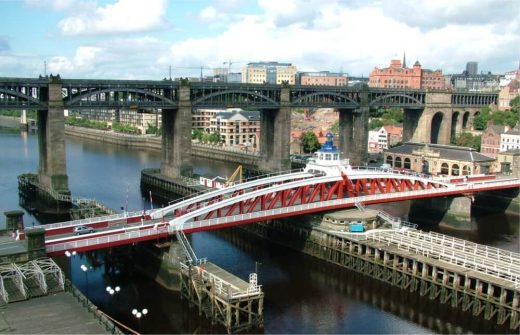Introduction:
Hydraulic bridges, also known as hydraulic engineering or water bridges, have existed for thousands of years. One of the earliest examples of a hydraulic bridge was the aqueduct system built by the ancient Romans, which transported water over long distances to cities and towns. The aqueducts were constructed using a combination of arches and tunnels, and some were also used as bridges to allow people to cross over them.
The hydraulic bridge was developed in medieval Europe to defend castles and other fortifications. These bridges were often built with a mechanism that allowed them to be raised or lowered, allowing access to the castle only to those who knew how to operate it. Hydraulic bridges are used in various applications, from large-scale transportation infrastructure to smaller-scale water management projects. They are often used to control water flow in rivers and streams, provide access to offshore oil rigs, and support the weight of large vehicles such as trains and trucks.
What is a Hydraulic Bridge?
A hydraulic bridge, called a “moving bridge,” spans water to connect two land masses on opposite sides. In a nutshell, it can be relocated to make way for ships and boats. The design of the bridge has a built-in hydraulic system so that it can support greater loads. Arch bridges, where most forces act laterally, are ideal candidates for the system. The hydraulic system built into the bridge’s main load-bearing members can be controlled electronically to a limited extent. Still, with proper calibration and construction, the system can make minor adjustments on its own, resulting in reduced maintenance costs and a lower risk of accidents in the event of an electrical failure.
Already-existing hydraulic bridge designs began to use hydraulic gears at the turn of the twentieth century. The hydraulic bridge has many benefits, including precise acceleration and deceleration, positive locking in any weather, driving end locks, simple controls, and the capacity to support a wide range of weights.
Importance of Hydraulic Bridge:
Hydraulic bridges are important for several reasons:
1. Flood control: Hydraulic bridges help control flooding by allowing excess water to flow through the bridge and prevent damage to the bridge and surrounding areas.
2. Navigation: Hydraulic bridges provide access to ships and boats by lifting or lowering their decks. It is particularly important in areas with heavy maritime traffic.
3. Transportation: Hydraulic bridges can also facilitate transporting people and goods across water bodies. They provide a way for vehicles and pedestrians to cross the water without needing a ferry.
4. Aesthetics: Hydraulic bridges can be visually striking and add to the architectural beauty of a city or town. They can become landmarks and tourist attractions, which can boost local economies.
Working Mechanism of the Hydraulic Bridge:
A hydraulic bridge is a movable bridge that uses hydraulic cylinders to raise and lower the bridge deck. The mechanism involves the following steps:
- A hydraulic pump creates pressure in the hydraulic fluid, which is stored in a reservoir.
- When the bridge needs to be raised, the pump directs the fluid to a hydraulic cylinder beneath the bridge deck.
- The fluid pressure causes the piston in the hydraulic cylinder to extend, pushing the bridge deck up.
- The bridge deck is supported by counterweights, which balance its weight and make it easier to raise and lower.
- Once the bridge deck is up, it is locked in place.
- To lower the bridge, the pump directs the fluid to the other side of the hydraulic cylinder, causing the piston to retract and the bridge deck to lower back to its original position.
- The process is repeated whenever the bridge needs to be raised or lowered.
Overall, the hydraulic bridge relies on the force of pressurized fluid to lift and lower the bridge deck, making it an efficient and reliable mechanism for moving bridges.
Types of Hydraulic Bridge:
1. Bascule Bridge:
A Bascule bridge is a movable bridge that operates using a counterweight that balances the span as it pivots upward or downward to allow boats and ships to pass underneath. The name “bascule” comes from the French word for “see-saw,” which is an appropriate description of the bridge’s action. Bascule bridges are commonly used in cities with waterways where traffic must pass. Some famous examples of bascule bridges include Tower Bridge in London, the Brooklyn Bridge in New York City, and the Jacques Cartier Bridge in Montreal.
The counterweight system used in bascule bridges minimizes the energy required to move the bridge span and ensures that the span remains balanced in its raised and lowered positions. It is typically accomplished through complex mechanical and electrical systems that can control the speed and direction of the bridge’s movement. Bascule bridges are a popular tourist attraction in many cities worldwide and are often featured in postcards and photographs. They are also important transportation infrastructure, providing a critical link between land and water transportation.

Fig 1: Bascule Bridge
Courtesy: sciencestruck.com
2. Lifting bridge:

Fig 2: Lifting Bridge
Courtesy: tripadvisor.in
A lifting bridge, also known as a drawbridge, is a type of movable bridge that can be raised or lowered to allow the passage of boats or ships on a waterway. It consists of a platform, or roadway, supported by a counterweight system and can be raised and lowered by mechanical means. The lifting mechanism typically involves a series of cables, pulleys, and counterweights that are used to lift and lower the bridge. The counterweights are designed to offset the weight of the platform and any vehicles or pedestrians crossing it, allowing the bridge to be raised and lowered with relatively little effort.
Lifting bridges are commonly found in areas with heavy boat traffic, such as harbors and canals, and are often used to connect two land masses separated by a waterway. They are an important part of transportation infrastructure, allowing boats and ships to navigate waterways while maintaining the vehicle and pedestrian access.
3. Swing Bridge:

Fig 3: Swing Bridge
Courtesy: tripadvisor.in
A swing bridge is a movable bridge that pivots on a central point and swings open to allow water traffic to pass through. The bridge consists of a deck, the roadway or walkway for traffic, and a truss or girder system that supports the deck and allows it to pivot. Swing bridges are commonly used in waterways where clearance is needed for vessels that cannot pass under a fixed bridge. They are typically operated by a bridge tender or operator, who receives signals from boats requesting passage and opens or closes the bridge accordingly.
One of the advantages of a swing bridge is that it requires less clearance height than other types of movable bridges, such as a bascule or lift bridge. However, it also has disadvantages, such as a slower opening and closing time and potential traffic delays for vehicles waiting for the bridge to reopen.
Advantages of Hydraulic Bridge:
Some of the key advantages of the hydraulic bridge are as follows:
1. Navigation: Hydraulic bridges can be raised or lowered to allow large vessels to pass through, making them ideal for waterways with much boat traffic.
2. Cost-effective: Hydraulic bridges can be more cost-effective than the fixed bridge as they require less material and construction time.
3. Low maintenance: Hydraulic bridges require less maintenance than movable bridges, such as bascule bridges, as they have fewer moving parts.
4. Durability: Hydraulic bridges are designed to withstand extreme weather conditions and heavy traffic, which makes them durable and long-lasting.
5. Aesthetics: Hydraulic bridges can be designed to blend in with their surroundings and add to the visual appeal of a city or waterfront area.
6. Improved traffic flow: Hydraulic bridges can help to improve traffic flow by reducing congestion caused by long wait times for boats to pass through, particularly during peak periods.
Conclusion:
Hydraulic bridges are movable bridges used for centuries to allow watercraft to pass through. They operate using a hydraulic system, which involves large hydraulic cylinders powered by pumps and controlled by a computerized system. While hydraulic bridges can be expensive to build and maintain, they offer several advantages over other types of bridges, including the ability to accommodate a wide range of watercraft sizes and the ability to be operated remotely. Overall, hydraulic bridges are important in transportation infrastructure, particularly in urban areas where waterways intersect with major transportation routes.
References:
1. Hydraulic Assisted Bridges. (n.d.). Hydraulic Assisted Bridges – Designing Buildings. https://www.designingbuildings.co.uk/wiki/Hydraulic_Assisted_Bridges
2. Hydraulic bridge advantages and types. (2022, April 7). Constro Facilitator. https://constrofacilitator.com/hydraulic-bridge-advantages-and-types/
3. Advantages of Hydraulic Bridge. (356 C.E., January 1). Advantages of Hydraulic Bridge. https://whyps.com/advantages-of-hydraulic-bridge
4. Moveable bridge – Wikipedia. (2011, April 1). Moveable Bridge – Wikipedia. https://en.wikipedia.org/wiki/Moveable_bridge
5. Ramiz, E. (2020, July 15). Hydraulic Bridge – its 3 Types, Working & Advantages. Civil Click. https://www.civilclick.com/hydraulic-bridge/
If you have a query, you can ask a question here.



I need your help to complete my diploma in 85%marks with great information ,Sir????
Remarkable. I scored 80 out of 100 in my presentation on hydraulic bridge